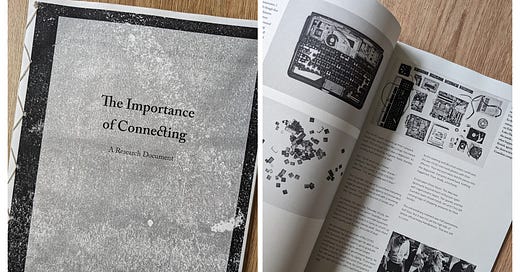My graphic design degree from UWE, Bristol was a great accidental introduction to content design.
Unusually, we were encouraged to create our own content. This meant writing content, taking photographs, creating illustrations or artwork — even writing our own project briefs.
This gave me a deep connection to the content I was designing.
Here I reflect on how I adapted my graphic design experience to content design.
Information architecture and layout
Both practices consider how something looks to the viewer. This means thinking about hierarchy and considering which information is most important to the viewer.
Graphic designer’s might think a little more about white space, or a choice of grid system.
This is less important to me as a content designer as I’m often working in fluid, digital environments.
Readability and typography
How easy information is to read is affected by the language we use, but also the way it looks. This is where graphic and content design work towards the same goal.
In graphic design, readability best-practice relates to visual things like line length, letter spacing, font choice and size, and punctuation.
Learning typography also gives you a good understanding of the rules of punctuation. For example, the different between a hyphen and en dash was drilled into me at university.
It also means that you handle a lot of written content, and part of your job is to look for errors and any mistakes as the last viewer before something goes live.
Stakeholders and decision making
Sign off and agreement is important for both design practices.
In graphic design, this is often about co-writing a brief and listening and understanding someone else’s vision.
It might be appropriate to create multiple versions and show this to a client.
In content design, stakeholder management and decision making is very important. To get people on board, UX design is more about presenting a rationale and building a resolution for multiple needs at once.
Process and documentation
When studying art subjects, it’s common to document your ideas and rationalise your work to people who are looking at it for the first time.
This practice is a lot like how a content designer often has to do desk research, and present findings back.
Being able to explain why decisions have been made is an important part of being a user-centered designer.
Now and then
For me, the main objective of both practices is to make information clear to others.
Now I work alongside product designers who can focus on how things look, whilst I can focus on meaning.
It’s a fun challenge to try and balance these two design problems.



